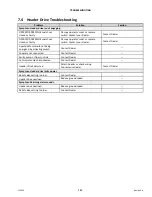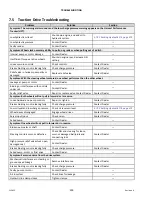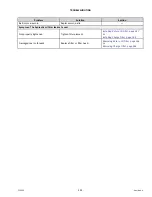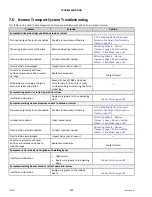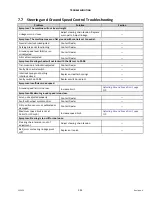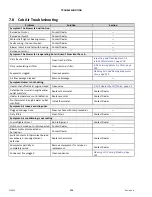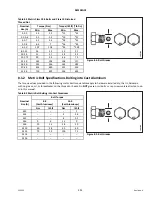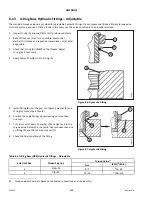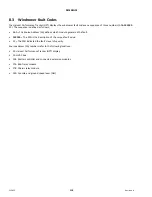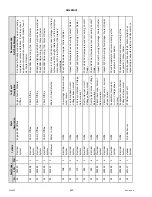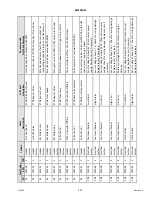
215922
399
Revision A
Chapter 8:
Reference
The reference section provides additional information on topics such as lubricants, fluids and their system capacities, fuel
and torque specifications, and converting between metric and SAE measurements.
8.1
Torque Specifications
The following tables provide torque values for various bolts, cap screws, and hydraulic fittings. Use these values only when
no other torque value has been specified in a given procedure.
•
Tighten all bolts to the torque values specified in the charts below, unless you are directed otherwise in this manual.
•
Replace removed hardware with hardware of the same strength and grade.
•
Use the torque value tables as a guide when periodically checking the tightness of bolts.
•
Understand the torque categories for bolts and cap screws by reading the markings on their heads.
Jam nuts
Jam nuts require less torque than nuts used for other purposes. When applying torque to finished jam nuts, multiply the
torque applied to regular nuts by 0.65 to obtain the modified torque value.
Self-tapping screws
Use the standard torque values when installing self-tapping screws. Do
NOT
install self-tapping screws on structural or
otherwise critical joints.
8.1.1
Metric Bolt Specifications
The torque values provided in the following metric bolt torque tables apply to hardware installed dry; that is, hardware
with no grease, oil, or threadlocker on the threads or heads. Do
NOT
grease or oil bolts or cap screws unless directed to do
so in this manual.
10013701001370
A
Figure 8.1: Bolt Grades
Table 8.1 Metric Class 8.8 Bolts and Class 9 Free Spinning Nut
Nominal
Size (A)
Torque (Nm)
Torque (lbf·ft) (*lbf·in)
Min.
Max.
Min.
Max.
3-0.5
1.4
1.6
*13
*14
3.5-0.6
2.2
2.5
*20
*22
4-0.7
3.3
3.7
*29
*32
5-0.8
6.7
7.4
*59
*66
6-1.0
11.4
12.6
*101
*112
8-1.25
28
30
20
23
10-1.5
55
60
40
45
12-1.75
95
105
70
78
14-2.0
152
168
113
124
16-2.0
236
261
175
193
20-2.5
460
509
341
377
24-3.0
796
879
589
651





